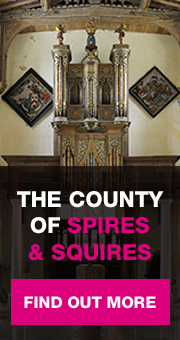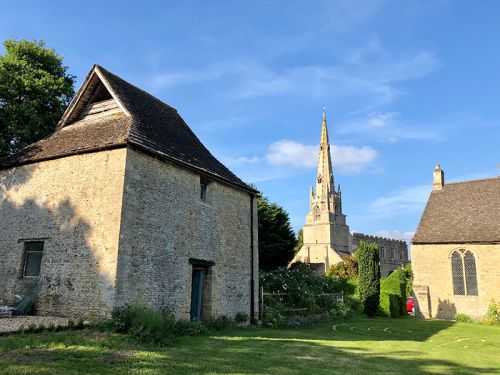12th October 2018
Imagine buying a lovely old Georgian farmhouse with plenty of outside space for the children to run around. Then imagine being a historian, and discovering years later that actually you are living in the oldest continually inhabited home in Northamptonshire! This month I am visiting Prebendal Manor, Nassington to speak with Jane Baile.
Jane had been living in Islington in 1968 when she purchased the manor. She knew that the place was desperately in need of renovation, and hideously wallpapered. She narrowly escaped falling through a ceiling when initially viewing the property, but as a Northamptonshire girl, Jane fell in love with the manor. It took her 14 years before she started to research the history of her home, starting with the question, 'why Prebendal?' Jane learned that a 'prebend' referred to an income generating holding granted to a senior member of the church, in this case, an influential canon from Lincoln cathedral. The first prebendary to benefit was Ranulf de Nassington, recorded around 1150AD. But it was clear that the manor had even earlier origins, so more research was needed. Jane described the thrill of discovering that a thousand years ago, the Ramsey Abbey Chronicles had mentioned her home as being visited by its owner King Cnut. Cnut is often referred to as Canute, the king who famously demonstrated the fleeting nature of temporal power by ineffectually commanding the waves to retreat. It seemed that Cnut once owned the Manor, and his 1017 visit was recorded in the Chronicles.
Time Team were fascinated by the story, and the results of Jane's own archaeological investigations. In 2004 the episode describing their investigations aired, showing Tony Robinson and the crew digging up the interior of the manor to examine the earliest phases of the building. This confirmed Jane's research, a large wooden Anglo Saxon aisled hall, with a hearth and pottery dating directly to Cnut's time.
The manor remained a royal possession until 1107, when King Henry I gave it to the Bishop of Lincoln to provide income and accommodation for the canons of the cathedral.
Of course, over the subsequent 1000 years there have been many further discoveries. Tree ring dating of the great hall's roof timber revealed that it was constructed from two trees growing next to each other in 1124. Other research revealed that the dovecote is over 600 years old, and was designed to hold 576 pairs of doves. These were kept to provide readily available meat, as the young, called squabs, were eaten at around 6-8 weeks old.
One of my favourite features is to be found hidden on the moulding at the top of a double lancet window. Although the window is mediaeval, around 400 years ago someone scratched a protective or apotropaic mark of St Andrew's cross, to prevent witches entering the property. Jane showed me many other protective marks, mostly scorch marks intended to protect against malign forces. They are still effective, as Jane assures me that the house remains free from witches.
For more information, please visit www.prebendal-manor.co.uk
Your login details have been used by another user or machine. Login details can only be used once at any one time so you have therefore automatically been logged out. Please contact your sites administrator if you believe this other user or machine has unauthorised access.








